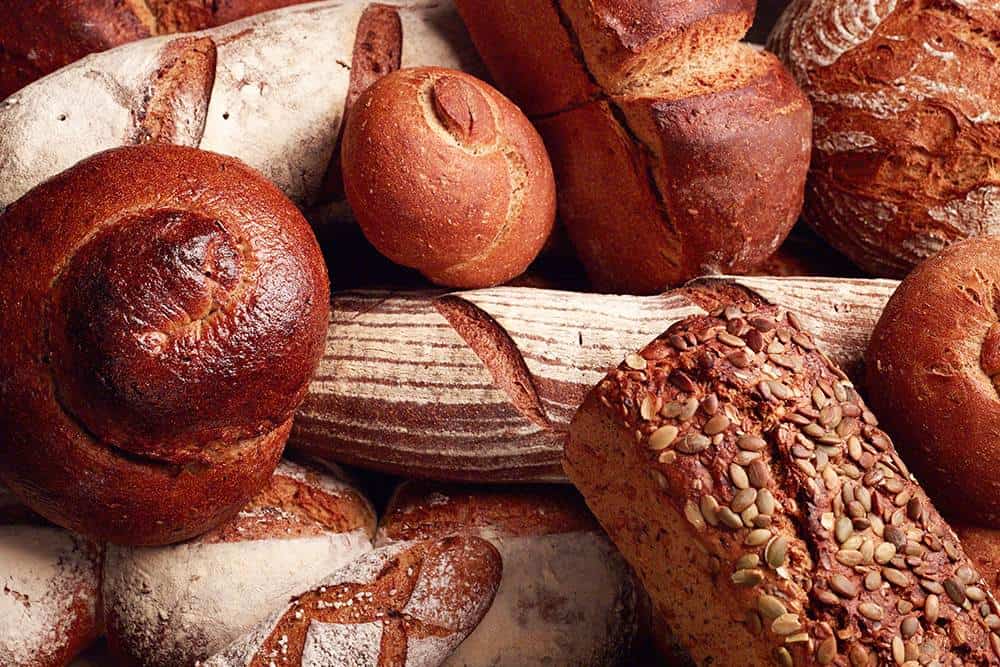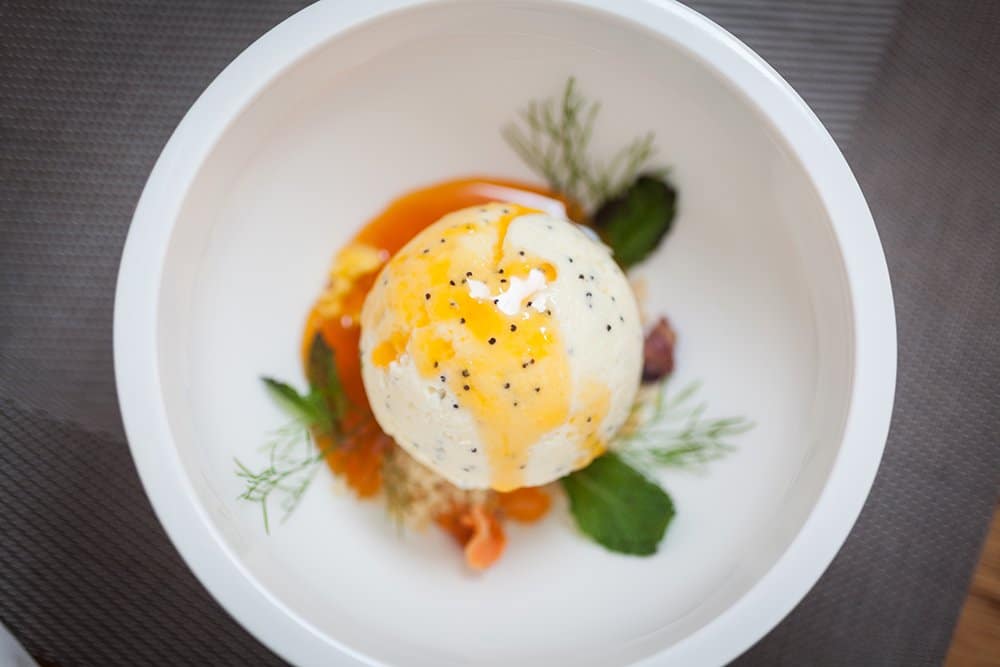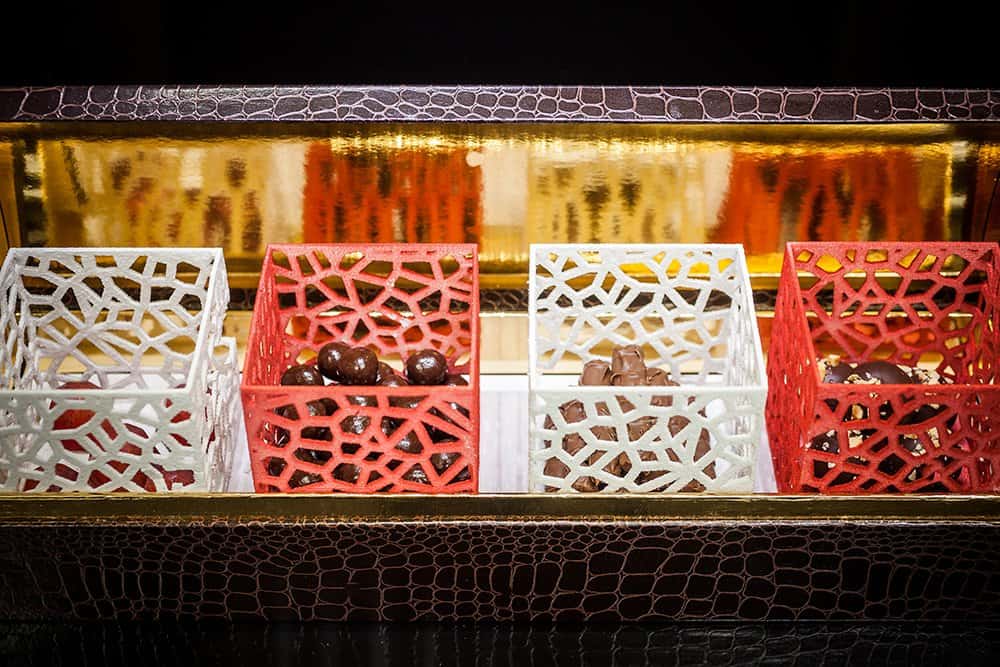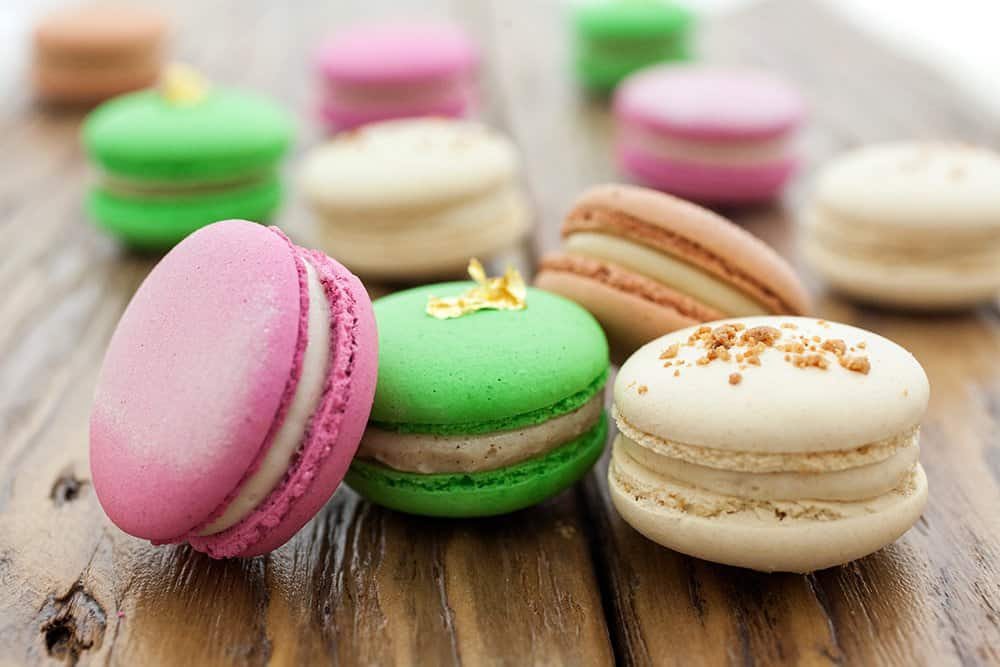To help us understand where baking and pastry is headed, as well as where it came from, we caught up with Tom Vaccaro ’85 to ask a few questions.
How has baking and pastry evolved in the industry?
The industry has been moving away from the general bakery to specializations across the board—for example, chocolatiers and high-end pastry shops—and CIA graduates have driven much of that growth. We’ve also seen a large expansion in artisan breads and plated desserts in fine dining across the U.S.

How is the way we teach baking and pastry students different now vs. when the program started in 1990?
Information for developing new courses comes from the industry and our own research. The associate degree originally was more of a general overview of the baking and pastry arts, and over time, we replaced 10 of the courses with new, specialized ones. We also added another experiential class beyond the Apple Pie Bakery Café—the Restaurant Operations course, which covers fine dining breads and plated desserts served in both The Bocuse Restaurant and American Bounty Restaurant.
In addition, in the 30-plus years that have passed, the associate degree has grown into a full bachelor’s degree. And the Advanced Concepts in Baking and Pastry concentration was added to the bachelor’s program. The students are so excited about it—they spend a semester in California, where industry experts come in to lecture, and an artist talks to them about design and how it’s applied not only to the pastry, but also to packaging and marketing.

How have baking and pastry career opportunities changed?
There are a lot more now. A large segment is the world of cafés, from casual to upscale. So baking and pastry students need to know how to make savory items as well as pastries, ice creams, and breads. And they also need entrepreneurial skills. The curriculum addresses those needs, with the bachelor’s degree in Food Business Management and the Café Savory Production class at the associate degree level.
Why is science so important in baking and pastry?
Science is a big, broad term. In baking and pastry, it’s about identifying ingredients and understanding their values, reactions, and purposes. Why do you add them? What’s the meaning behind each of them? The Baking Ingredients and Equipment Technology course addresses this; it’s the “how baking works” class. We discuss the functions of yeast, sugars, dairy, eggs, flour, nuts, oils, fats, and chemical leaveners—how they work in recipes and why.
What’s going on with 3D printing?
3D printing has expanded; we’ve got both a powder-based printer and system as well as one for chocolate, and we’re using them to create experiences in desserts that enhance our current lineup. For example, a dessert served in the American Bounty Restaurant would traditionally be covered with a metal cloche; we’re experimenting with making the cloche with sugar, so you could eat it along with the dessert. The same applies to desserts served in a glass—we can print the glass from sugar. And we’re using 3D printing to create intricate cake decorations that, under time constraints, would otherwise be very difficult to make.

What trends do you foresee for baking and pastry?
Sweet indulgences and quality experiences. Smaller bites that are just the right amount. A growth in cafés, especially in quality baked items like an apple galette, a buttery croissant, or a great doughnut that’s just the right size. Macarons will continue to grow. Confectionery and chocolate shops will continue to open, especially “bean-to-bar” shops, where pastry chefs take the cacao beans and roast them, skin them, and create their own chocolate. They buy the beans from all over and create their own blends, adding things like spices or truffles.
On the bread side, I see more whole, organic, nonproduction-GMO grains, especially wheat berry, being used. These grains have better flavor and are better for you. Rye will become an important grain—it’s really good for you, and it’s really good for organic growers because, since it adds nutrients to the soil rather than depleting them, it’s the perfect rotational plant. However, rye needs to get incorporated into the chef’s repertoire, and it is a difficult flour to work with because there’s no gluten in it. I also see more individual milling in your own bakery, and more dense breads paired with quality meats and vegetables.
Can you share a few baking and pastry tips?
- Stick to high-quality ingredients. Use the best butters and flours you can find.
- Make portion sizes small and indulgent for your guests.
- Don’t be afraid to take risks with your flavor profiles. All cookies don’t have to be chocolate chip! Try a cookie with candied orange, dried cherries, and allspice; or pressed granola bars with macadamias and dried pineapple.
- Keep your baked goods covered in an airtight container. They start losing moisture and freshness as soon as they come out of the oven.
A 1985 CIA alumnus, Tom Vaccaro is a Certified Executive Pastry Chef, Certified Master Baker, and the American Culinary Federation’s 2004 National Pastry Chef of the Year. Throughout his long and successful career, he has worked at top industry properties and earned gold medals in competitions around the world.
Bake Your Way to a Sweet CIA Education!
Discover our Baking and Pastry Arts major and let your creativity shine.
